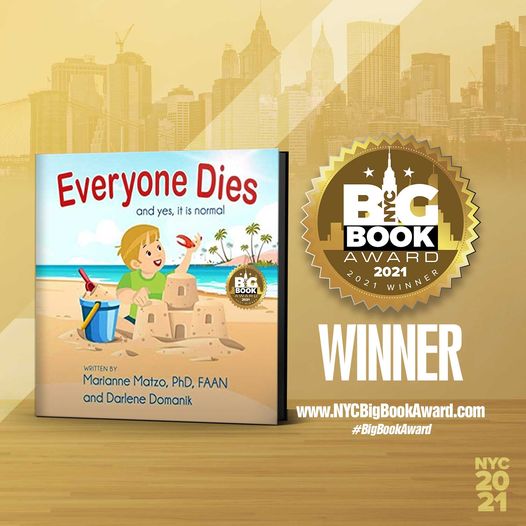Learn how to identify the early symptoms and causes of the second-most common cause of dementia behind Alzheimer’s disease. We also talk about ways to improve lifestyle to slow the progress.
What is Vascular Dementia?
Vascular dementia is caused by a stroke or transient ischemic attack (TIA), which can be referred to as “mini-strokes.” Simply explained, a stroke happens when blood flow to an area of the brain is cut off. When this happens the brain cells that have had no oxygen die. When brain cells die during a stroke, abilities controlled by that area of the brain are lost, like memory and muscle control.

What are the differences between Alzheimer’s Disease and Vascular Dementia?
People with vascular dementia have problems with reasoning, judgment, and memory. These symptoms can appear suddenly, or they could be mild at first and gradually worsen. It can be challenging to diagnose because it can occur together with Alzheimer’s and the symptoms can vary from person to person.
There are some differences between vascular dementia and Alzheimer’s disease. One of the main ones is in the early symptoms. In Alzheimer’s disease, it’s usually forgetfulness. In vascular dementia, this usually isn’t the case. Instead, early symptoms tend to include slowed thought and problems concentrating, making decisions, following directions, planning and organizing. The two diseases become more similar as vascular dementia progresses.
How Does Vascular Dementia Progress?
How quickly Vascular Dementia occurs depends on the cause. When it results from a stroke, symptoms are more likely to begin suddenly. About 20% of people who suffer a stroke will develop vascular dementia within six months. Whether or not changes in thinking, memory, or mental ability occur will depend on the area of the brain the stroke affected. The extent of the stroke can influence the severity of the symptoms.
The table below is based on the The Global Deterioration Scale (GDS), developed by Dr. Barry Reisberg, provides caregivers an overview of the stages of cognitive function for those suffering from a primary degenerative dementia such as Alzheimer’s disease. It
is broken down into 7 different stages. Stages 1-3 are the pre-dementia stages. Stages 4-7 are the dementia stages. Beginning in stage 5, an individual can no longer survive without assistance.
| Stage | Diagnosis | Signs and Symptoms |
|---|---|---|
| 1 | No cognitive decline- No dementia | There are no visible signs of cognitive impairment or signs of dementia in patients. |
| 2 | Very mild cognitive decline- No dementia | Patients have some issues with memory such as misplacing objects and forgetting names. These signs are often viewed as normal forgetfulness that are associated with aging. Signs may also not be apparent to loved ones or physicians. |
| 3 | Mild cognitive decline- No dementia | At this stage, dementia is still undiagnosed. However, patients begin having increased trouble with memory and concentration. They may also misplace or lose valuables. A decline in job performance is also more noticeable. Loved ones and physicians also notice a decline in cognition. |
| 4 | Moderate cognitive decline- Early-stage dementia | Signs are more clear-cut in clinical interviews at this dementia stage. Patients may have trouble performing complex tasks. They may also have some trouble remembering their own personal histories. However, they may not always forget the names or faces of loved ones. Often, patients are in denial of their symptoms. |
| 5 | Moderately severe cognitive decline- Mid-stage dementia | At this dementia stage, patients need assistance. They may have trouble remembering relevant details or their own lives such as their address or phone number. They may also forget names of family members. Patients may also frequently be disoriented. |
| 6 | Severe cognitive decline- Mid-stage dementia | At this point, patients may occasionally forget their spouses’ or other loved ones’ names. They’ll also have trouble recalling recent events in their lives. Patients are also unaware of the time and their surroundings. They usually require some assistance with daily activities and may have changes in behavior. |
| 7 | Very severe cognitive decline- Last-stage dementia | Over the course of this dementia stage, patients lose the ability to communicate verbally. They also become incontinent and require assistance when using the bathroom. Patients also require assistance in other daily activities such as eating and getting dressed. They also have trouble with basic psychomotor skills such as walking. |
What Can I Do?
The risk factors for Vascular dementia are:
- Being over age 65
- Having had a stroke, TIA, or heart attack
- High blood pressure, high cholesterol
- Diabetes
- Heart or blood vessel disease
- Hardening of the arteries
- Smoking
- Drinking alcohol in excess
- Abnormal heart rhythm
Currently, there are no treatments available to treat the changes from vascular dementia’s damages. On average, people with vascular dementia will live for 5 years after symptoms get started, less than the average for people with Alzheimer’s disease. In many cases, their death will be caused by a heart attack or stroke.

However, there is substantial evidence that treatments of common risk factors may help postpone and prevent further decline. Here are some ways to treat risk factors and simultaneously prevent vascular dementia from occurring:
- Try to keep the heart healthy. Following a heart- healthy diet can improve or slow down your vascular dementia symptoms.
- Walking 30 minutes a day can reduce the risk of vascular dementia. Regular exercise can help control your weight, boost your overall health and relieve stress.
- Keep cholesterol, blood pressure and blood sugar levels must be under control.
- Have more fun. For example, playing, laughing, enjoying your life are great ways to relieve stress and worry, thus preventing further strokes and making up for memory and cognitive losses.
- Manage your stress and know how to relax yourself. It is helpful to follow relaxation techniques including meditation, yoga, deep breathing.
- Do not smoke and limit alcohol consumption.
If you look at our podcast titles you see that we offer you shows about exercise, healthy lifestyles, mindfulness, and mental health. While we know everyone dies, research data supports that these lifestyle changes have the potential to delay the hour of our death.
Related Content:
- S1E46: Left-sided Strokes
- S2E15: A Stroke of Luck
- S3E46: How to Help Yourself when Your Brain is Foggy
- S3E37: What Can a Mindfulness Practice Offer You?
- S1E20: The Five Invitations – Part 1 (see also Part 2 and 3)
References:
- I Know Who You Are Poem – L. E. Mastilock (lemastilock.com)
- Van Gogh and the Consolation of Trees – The New York Times (nytimes.com)
- Reisberg, B., Ferris, S.H., de Leon, M.J., and Crook, T. The global deterioration scale for assessment of primary degenerative dementia. American Journal of Psychiatry, 1982, 139: 1136-1139.
- Vascular Dementia Progression, Prognosis & Life Expectancy (healthgrades.com)
- What Is Vascular Dementia? Everything You Need to Know – DailyCaring
Resources:
- Vascular Dementia Stages – 7 Stages Of This Type Of Dementia
- An Overview of the 7 Stages of Vascular Dementia
Recipe of the Week
This cake is a traditional companion to a barbecue feast in the south, but we recommend it also for a funeral luncheon. Or, maybe part of that enjoying life to its fullest? Get the recipe at Southern Living.


https://blog.feedspot.com/palliative_care_podcasts/
Everyone Dies: and yes, it is normal!
Everyone Dies (and yes, it is normal) is a story about a young boy named Jax who finds something special on the beach where he and his grandpa Pops are enjoying a wonderful day. Pops helps Jax understand that death is a normal part of life. This book provides an age appropriate, non-scary, comfortable way to introduce the important topic of mortality to a preschool child. Its simple explanation will last a lifetime. Autographed copies for sale at: www.everyonediesthebook.com. Also available at Amazon
Mourning Jewelry

We offer a way to memorialize your loved one or treasured pet with a piece of handmade jewelry. When people comment on it and the wearer can say for example “I received this when my mother died” which opens the conversation about this loss. All our jewelry is made with semi-precious stones and beads, vintage beads, and pearls. You can choose between earrings or bracelets and the color family. Learn More



:max_bytes(150000):strip_icc():format(webp)/foppck031073863_0-00f56fdee3044f68bf149b72fc45adb0.jpg)






